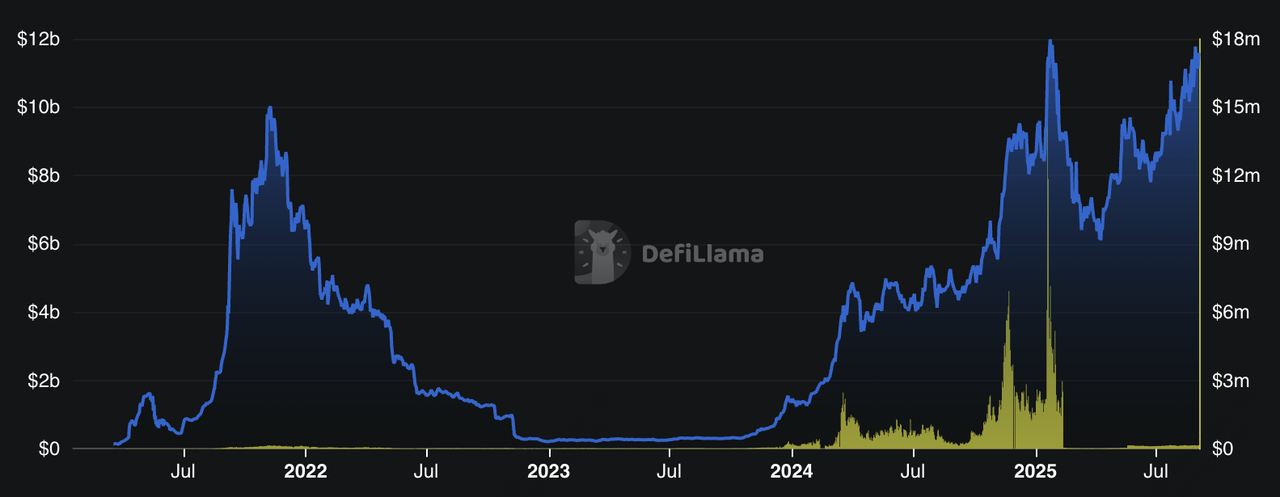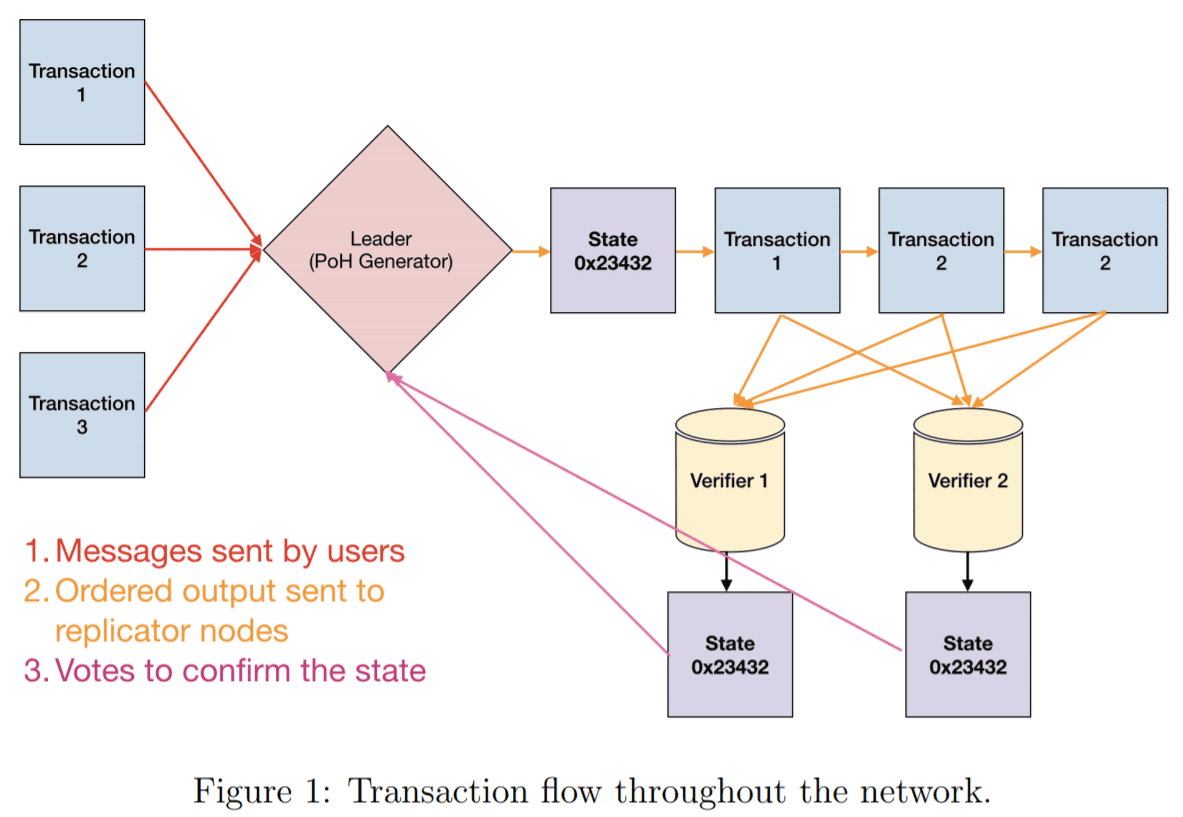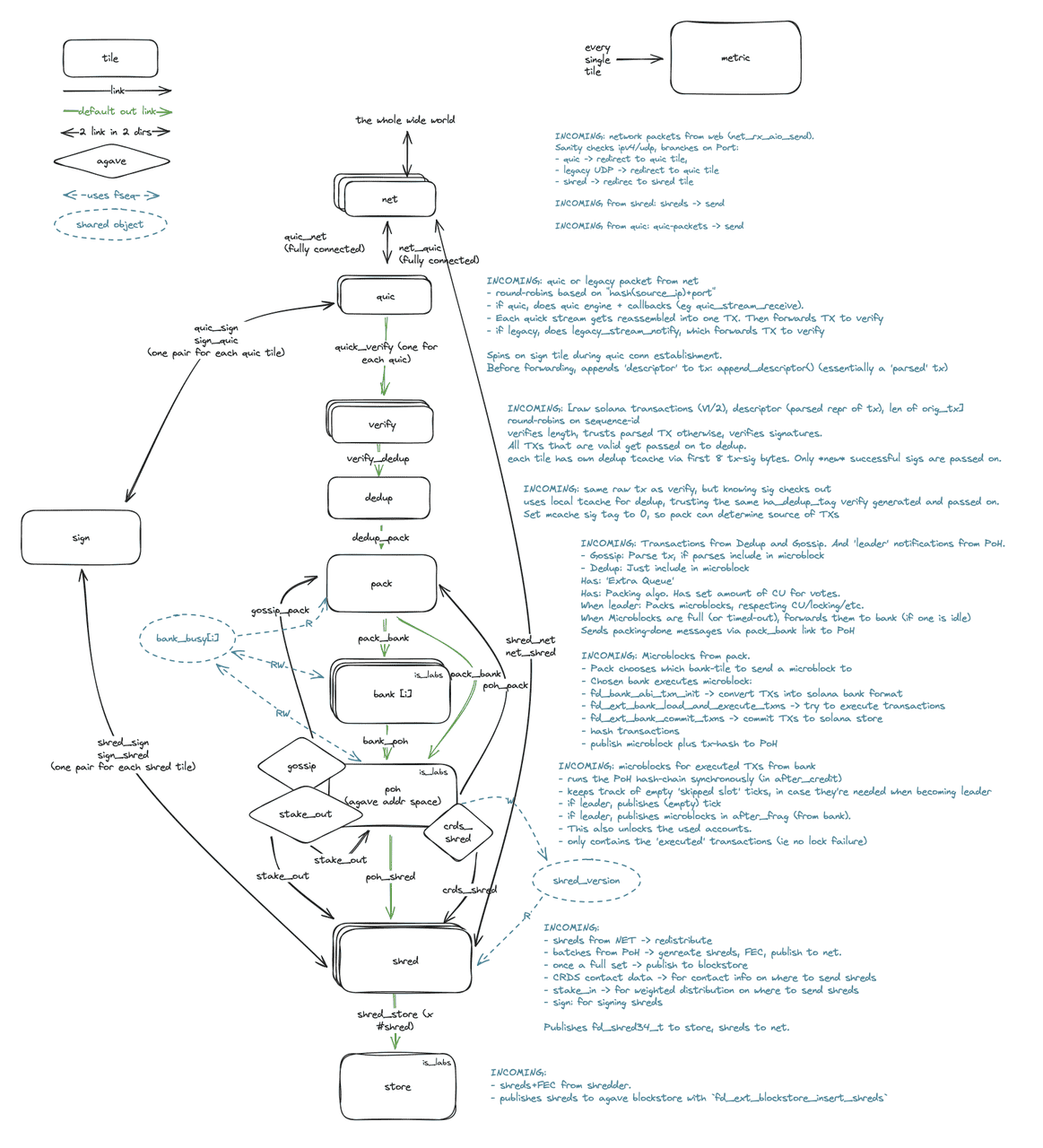Another one of Solana’s most anticipated upgrades set for 2025 is Firedancer, a next-generation validator client developed independently by Jump Crypto. While the Alpenglow consensus protocol focuses on reducing latency and improving block finality, Firedancer is all about maximizing performance, boosting resilience, and solving one of Solana’s most pressing issues, reliability.
Why Firedancer Matters
Solana has historically depended on a single validator client, developed by Solana Labs in Rust. While powerful, this setup created a critical point of failure. In the past, bugs in this client caused major outages, such as the 17-hour downtime in September 2021, where the entire network had to be restarted manually. Firedancer solves this with validator client diversity, a crucial step toward improving uptime and decentralization.
Firedancer is written in C++ and shares virtually no code with the original client. This independence helps protect the network: if one validator client crashes or is compromised, the others continue running unaffected. This design significantly enhances network security, stability, and resilience, key priorities as Solana scales to handle more institutional and retail users.
How Will the Firedancer Upgrade Impact Solana's Performance?
On testnet, Firedancer has achieved 1 million TPS on consumer-grade hardware by leveraging multithreading and hardware acceleration. Once live, it will reduce systemic risks from single-client failures and help ensure stability during high-demand events like NFT mints or DeFi launches.
By fully leveraging modern CPU architecture, Firedancer processes transaction validation, state updates, and block propagation concurrently, eliminating bottlenecks and ensuring smooth performance even during high-traffic events like NFT drops or major DeFi launches.
Firedancer isn’t the only new client on the roadmap. Solana is also introducing other validator clients such as Agave (a Rust-based fork of the original client), Sig (written in Zig), and Tinydancer (a lightweight option for home validators). Together, these efforts form a diverse validator ecosystem that improves decentralization, minimizes systemic risks, and enhances performance across the board.
What Are Other Upgrades in Solana's 2025 Roadmap?
Beyond Alpenglow and Firedancer, Solana’s 2025 roadmap includes several other upgrades that aim to improve performance, user privacy, and overall network efficiency.
1. Blockspace Expansion: Solana plans to double its blockspace in 2025, allowing higher transaction volumes without congestion while keeping fees low.
2. Micro-Optimizations: Updates to the Agave scheduler and Turbine protocol will streamline transaction processing and data distribution, boosting efficiency during peak demand.
3. Confidential Transfers: This feature will enable private, encrypted transactions on Solana, a critical step for institutions that require compliance and discretion.
4. Intra-Block Reactive Latency (IBRL): IBRL aims to achieve near-instant confirmations within each block, bringing Solana closer to Web2-level responsiveness for real-time applications.
Together, these enhancements reinforce Solana’s push to become the go-to chain for real-time applications, from payment networks to gaming platforms. They also set the stage for greater adoption by both retail users and institutional players in 2025 and beyond.
What Do Solana’s 2025 Upgrades Mean for Developers, Users, and the Network?
Solana’s 2025 upgrades, led by Firedancer and Alpenglow, mark a major turning point for the network. Together, these improvements aim to solve long-standing concerns around reliability, scalability, and performance.
For developers, these changes reduce network congestion and open the door to building more responsive, data-heavy dApps. Faster finality, improved infrastructure, and increased throughput make it easier to deploy applications that demand speed and consistency.
Users, meanwhile, benefit from smoother experiences, near-instant confirmations, and consistently low fees, even during periods of high activity. Privacy tools like confidential transfers and token extensions also enable more compliant and versatile use cases, from B2B payments to tokenized payroll systems. Altogether, these upgrades position Solana as a powerful foundation for
Web3 innovation, balancing speed, scalability, and decentralization in a way few Layer 1 networks can.
Conclusion: Solana's Position in the Future of Blockchain
With the approval of Alpenglow and the upcoming launch of Firedancer, Solana is positioning itself as a foundation for real-time financial markets. These upgrades aim to drastically cut latency, expand throughput, and strengthen infrastructure, bringing Solana closer than ever to Web2-level speed and responsiveness.
That said, risks remain. Alpenglow won’t fully resolve outage concerns until validator diversity improves with Firedancer and other clients. Solana also continues to face challenges from regulation, developer adoption, and competition with Ethereum and other Layer 1s. Still, with testnet rollout slated for December 2025 and a mainnet launch in early 2026, the network is entering its most transformative phase yet, one that Multicoin Capital’s Kyle Samani calls “the most significant rewrite of the Solana protocol to date.”
Related Reading


